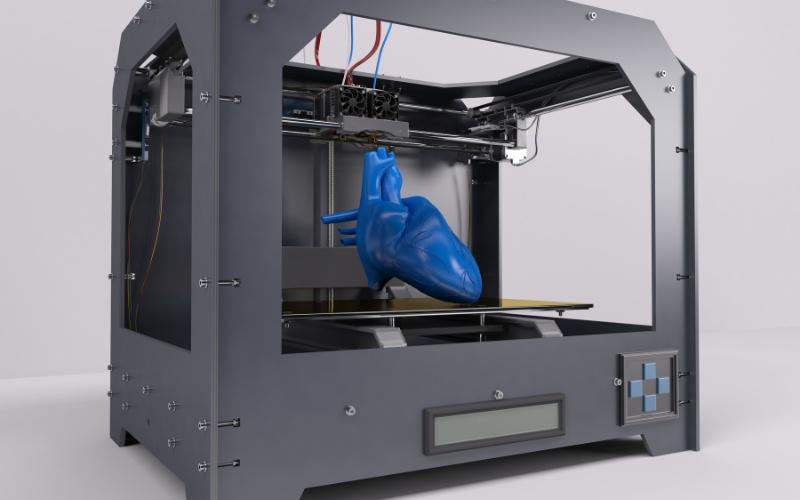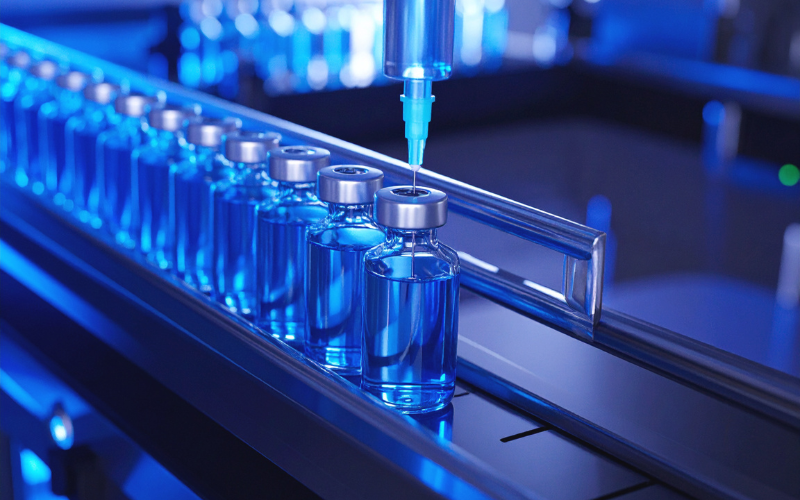Introduction: 3D Printing – A Revolutionary Force in Healthcare
3D printing is transforming the med-tech industry by enabling the rapid, cost-effective production of customised medical devices, implants, prosthetics and even human tissues. This cutting-edge technology empowers personalised healthcare solutions, reduces manufacturing time and increases accessibility. This article explores key applications of 3D printing in med-tech and its transformative potential.
1. 3D Printing in Prosthetics and Orthotics
Personalised Solutions for Orthopedic Care
Traditional prosthetic limbs and orthotic braces often lack customization, impacting patient comfort and functionality. 3D printing introduces:
- Customized Fit: Tailored prosthetics enhance comfort, usability and mobility.
- Enhanced Functionality: Innovative materials improve performance and durability.
- Greater Patient Satisfaction: Personalised solutions significantly improve quality of life for individuals with limb deficiencies or musculoskeletal conditions.
2. 3D Printing in Implants and Surgical Tools
Optimised Designs for Enhanced Surgical Success
Implants like dental crowns, hip joints and spinal cages are now 3D-printed using biocompatible materials, offering:
- Patient-Specific Designs: Custom-fit implants improve surgical accuracy and integration.
- Reduced Surgery Times: Pre-designed implants lead to faster and more efficient procedures.
- Improved Biocompatibility: Materials such as titanium and PEEK integrate well with the human body.
3. 3D Printing in Organ and Tissue Engineering
A Step Toward 3D-Printed Organs
Bioprinting 3D printing with living cells is advancing tissue engineering:
- Skin Grafts: Printed skin supports wound healing and burn treatment.
- Cartilage Regeneration: 3D-printed cartilage aids in joint repair.
- Organ Prototypes: Research into functional kidneys, livers and hearts is rapidly progressing.
Future Outlook: Experts anticipate transplantable 3D-printed organs could emerge within two decades, easing global organ shortages.
4. 3D Printing in Pharmaceutical Applications
Innovations in Personalised Medicine
3D printing is revolutionising pharmaceuticals by enabling:
- Customized Medications: Precise, patient-specific formulations improve compliance and outcomes.
- Advanced Drug Delivery Systems: Tailored drug release profiles enhance therapeutic effectiveness.
- Enhanced Pharma Solutions: Pharmaceutical companies are creating innovative personalised therapies through 3D printing.
Future Outlook: Experts anticipate transplantable 3D-printed organs could emerge within two decades, easing global organ shortages.
5. Challenges and the Future of 3D Printing in Med-Tech
Current Challenges:
- Regulatory Approval: Devices must comply with strict health and safety standards.
- Material Development: Continued innovation is needed for durable, biocompatible materials.
- High Setup Costs: Initial investments in 3D printing infrastructure can be significant.
Future Trends:
- Advancements in Bioprinting: Researchers aim to print functional, transplant-ready organs.
- On-Demand Medical Devices: Hospitals may soon produce tools and implants in-house.
- Broader Industry Adoption: As costs decrease, 3D printing is poised to become a med-tech standard.
Conclusion: A New Era of Med-Tech Innovation
3D printing is revolutionising healthcare through accessible, patient-specific solutions. From prosthetics to organ bioprinting and pharmaceutical advancements, this technology is expanding the frontiers of personalised medicine.





